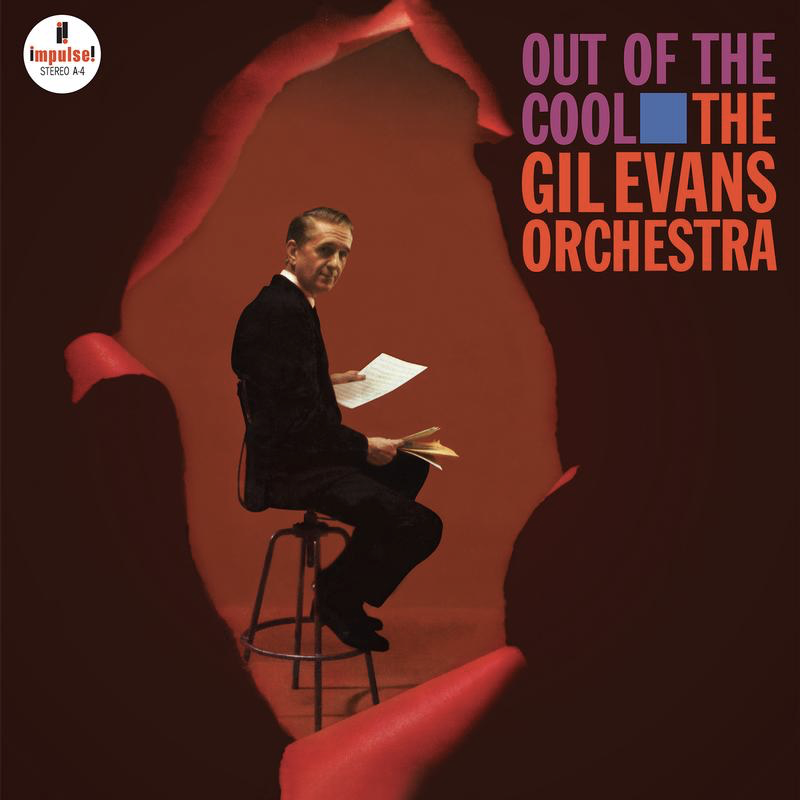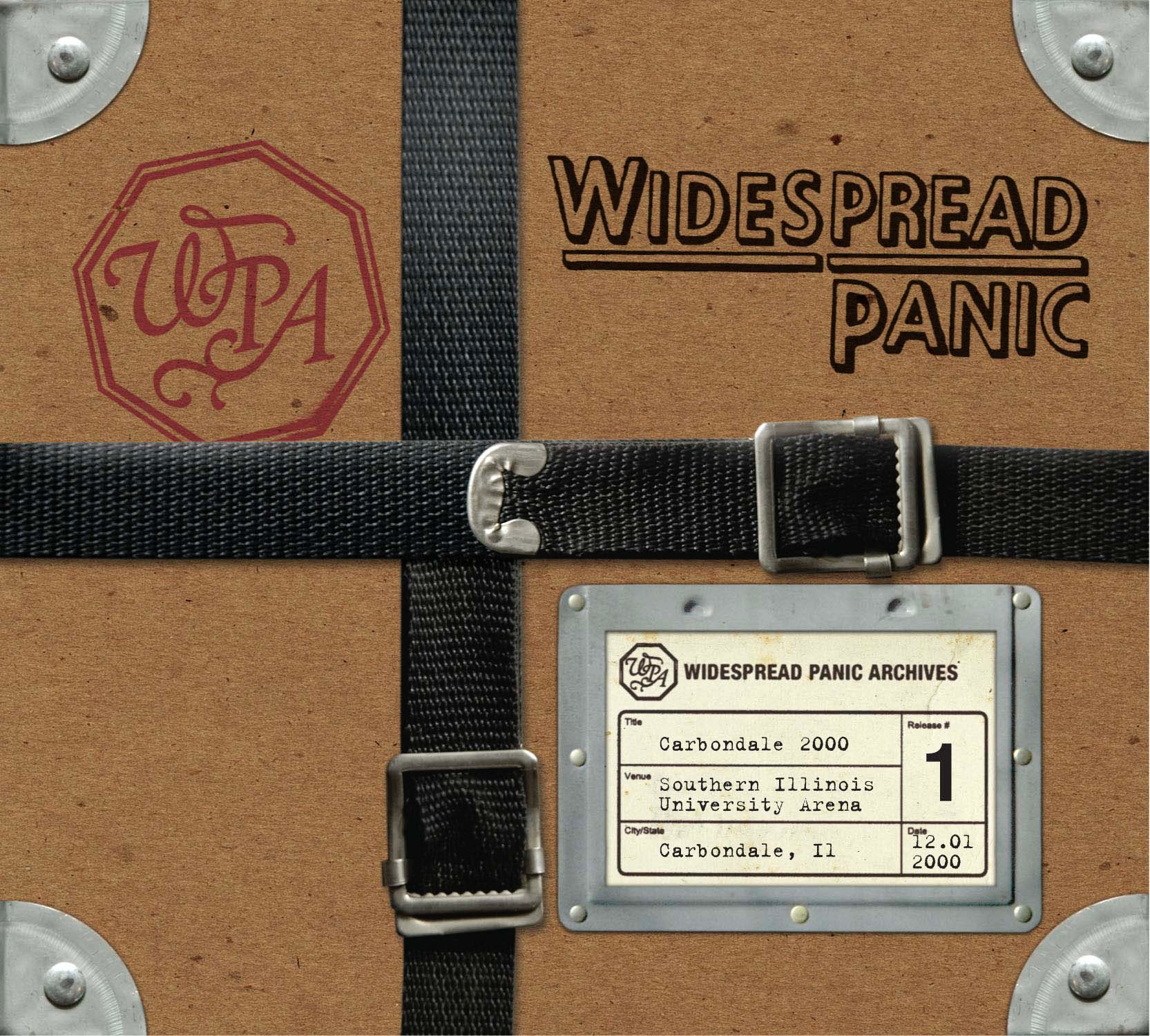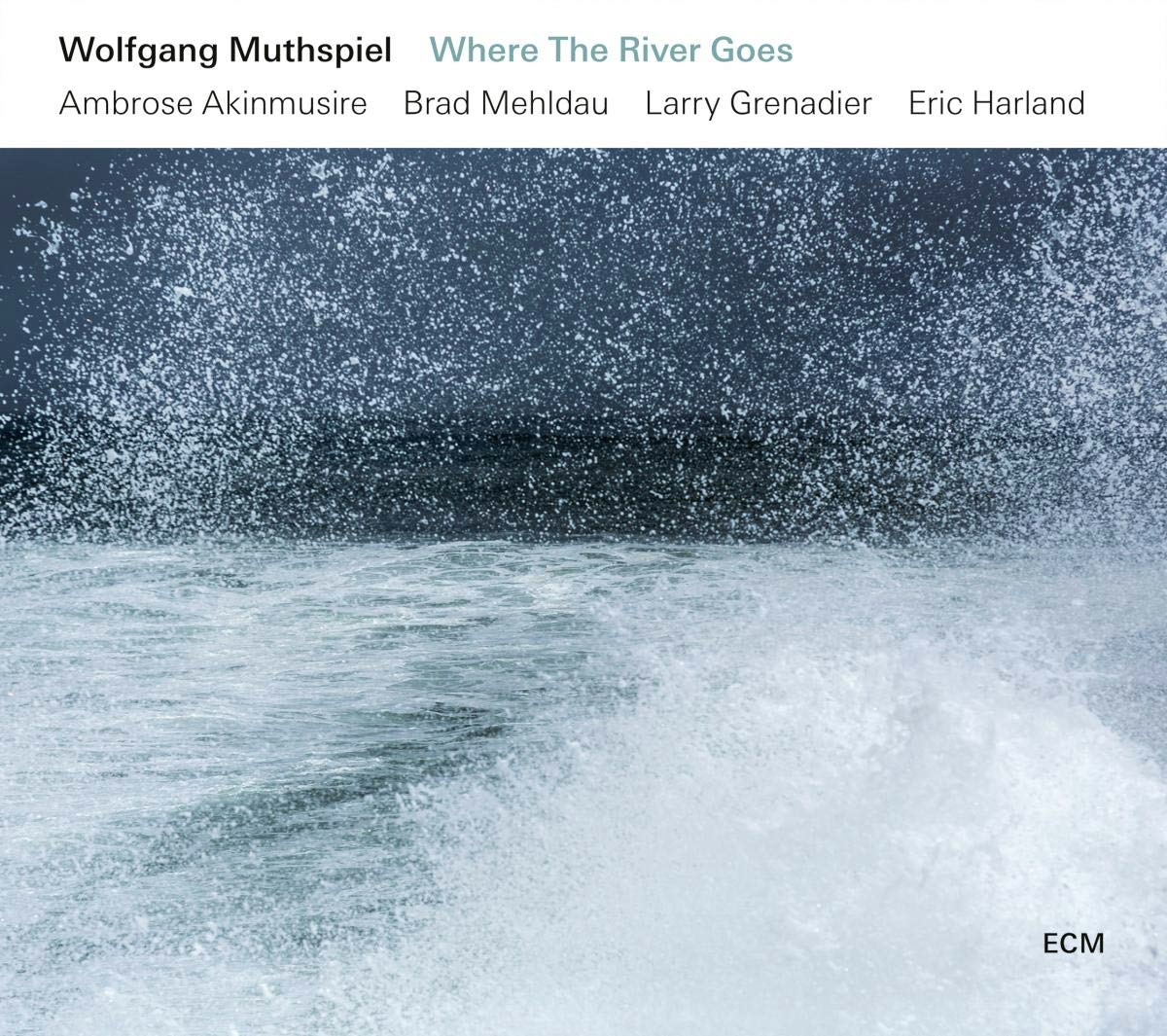
I gotta say: Vinyl Me, Please seems to have seriously upped their game recently. There was a much-ballyhooed price increase a few months back, and it didn’t seem to resolve much as far as smoothing out the wrinkles in the shipping process. Or the quality control with regards to the records themselves, actually. And they didn’t need the extra money to choose cooler records to release, so… I guess I don’t know where the extra money went. But they’re reissuing some especially strong titles lately. I received their take on King Curtis’s Live at the Fillmore West last month. It defies categorization, but it’s certainly good for the Soul. I mean, damn!
In 1971, King Curtis hired one of the baddest bands ever assembled. Live at the Fillmore West was recorded over three nights, and Curtis’s band served as Aretha Franklin’s opener and also her backing band for the run. The whole glorious production could be seen as an investigation into the concept of impermanence. Based on the sounds created at these shows, you’d have thought that the bands and the venue would live forever. But Aretha’s set was released as a live album just a couple of months after the shows wrapped, and the Fillmore closed eight weeks after that. A month later, Curtis’s set was released and became his bestseller. The album had been out for a week when he was murdered in front of his New York City home. There are a million lessons worth learning and re-learning, and two might be to make time for the things that are most meaningful to you and to hug those closest to you as often as possible.
The program starts with some crowd noise to set the scene, then Curtis addressing the audience by introducing his band. He starts where he should: with Jerry Jemmott on bass. I saw him play in Gregg Allman’s band once, and I don’t remember much of Allman. I couldn’t take my eyes off Jemmott. The bass looked like a toy in his hands. Not that he was massive so much as he just looked like he’d had the instrument figured out for so long that it was almost an afterthought to him, like someone discussing quantum physics while they juggle flaming bowling pins. He makes his presence felt on Fillmore, then come the drums, then the guitar and “a little pinch of” organ from the hands of Billy Preston. Then, the Memphis horns, then some congas, and finally Curtis himself with a brief solo blast before introducing a pianist not named “Preston.” The whole intro coalesces suddenly into a quick run through “Memphis Soul Stew,” a souped-up rager in the “Shotgun” vein, but sans vocals.
Like Aretha’s, Curtis’s setlist was likely tailored to suit the longhairs in attendance. It’s a treat to hear Preston handle “Whiter Shade of Pale” with Curtis’s lyrical runs expanding on the original melody before bursting through the chorus like his reed was on fire. “Them Changes” is a full-body workout that wouldn’t be out of place in a James Brown setlist from the Bootsy era. And, in fact, both bands played scalding takes on “Sign, Sealed, Delivered” at around this same time. Thankfully Curtis’s take is documented here. (The James Brown version actually features Bobby Byrd singing lead over Bootsy and the band while the Godfather lays out. Find it on Brown’s stellar Love, Power, Peace set.)
Curtis’s Fillmore album is a monster. Feels like you’re at the show. If you’re fortunate enough to have been to the Fillmore (long ago reopened in its original location), you have a visual image to add to the aural one and can almost be transported. It’s muggy. Smells like weed and unwashed hair. Pupils like leather drink coasters. It’s a great record to hear with friends. A party on wax.
The lacquers were cut from the original analog tapes by Ryan K. Smith, and the disc was pressed flawlessly at QRP. Much of the factual info contained herein was pulled directly from Andrew Winistorfer’s “listening notes,” which are informative even if they don’t warp your mind with creative overload and a heightened sense of artistic triumph. I enjoy reading them upon first listen, and then again later when familiarity with the album might result in increased clarity or appreciation. I’ll have lots of chances to explore the depths of this release. It’s an all-time great.

Vinyl Me, Please isn’t the only reissue company on a sonic roll recently. The Acoustic Sounds Series is doing great things as part of its partnership with the Verve Label Group. An audiophile could get lost for weeks in that theme park. You certainly wouldn’t be able to take it all in during one day. You’d need to visit the World of Verve, Impulse! Island, the Mercury Records Maze, and the Decca Demolisher, just to take it all in. Right now, the Impulse! Catalog is centerstage, having already seen two John Coltrane releases, one of which we covered here, and a couple by Nina Simone, amongst others. But the one that’s blown my mind right out of its frame is called Out of the Cool by the Gil Evans Orchestra. If my brain never recomposes itself from the jelly it’s become, it will all have been worth it.
This is a large band. Piano, percussion, electric guitar, acoustic bass, trumpets, a drum kit, lots more horns with duplicates of most in addition to flutes and piccolos and the like. The group swings with the deftness of a quintet but with the power of a Big Band. Like a small group of Film Noir tough guys strolling through the streets that you think you can handle, but then the full-blown gang emerges out of the shadows to start throwing auditory haymakers. The sounds are like fireflies. It’s impossible to predict where one will emerge out of the dark. Some are close and easily discernible, while others are distant and sound more like a suggestion than a statement of fact. The soundstage is endless, dizzying, and frenzied.
Secrets Sponsor
“La Nevada,” the tune that gives the album such gravity, feels like watching the birth of a song. By the time it really gets cooking, you’re just happy to be at the party with the cool cats. Like you lucked into an invitation from a stranger to some exclusive show. At someone’s house. With an infinity pool, a view, and an endless supply of shelled pistachio nuts. Each room is a mystery. There’s more than a hint of danger, but there’s safety in the light. Keep your hands on a wall to maintain your orientation. In the light of day, you might realize that things were not so confusing as they may have appeared. There was a theme, an improvised banquet of textures, and a return to the theme. Same as it ever was, but entirely different than what you’ve known to this point. “Where Flamingos Fly” is the morning after. You’ve made some hard-to-remember-but-undoubtedly-questionable decisions, and you’re needing to assess the probability that they’ll haunt you or become public. You’re lonesome and ponderous with a jaundiced liver and only a sad trombone for company. Luckily, there’s the haven of “Stratusphunk.” A comparatively straight walking blues, which is as much fun as the title suggests it should be. Good to be home, but you know things are different. You’ll never un-learn the lessons from side one. Nothing to do but go deeper in an attempt to find the other side.
This record is a sonic marvel, but I’m not completely sold on these releases being purely analog. Perhaps I’m just hyper-vigilant, but I’m wondering if there’s a difference between “mastered from the original tapes” and “lacquers cut from the original tapes.” Because this set advertises the former, not the latter. Perhaps there was some digital sweetening as part of the mastering process, but I also picked up Genius + Soul = Jazz by Ray Charles from this same series, and there’s noticeable clipping at times, possibly as a result of tape damage. Seems like that would have been corrected if there were digits in the chain somewhere. Anyway, they both sound great, and you should get them immediately. Out of the Cool was handled by the same outfit that brought us the King Curtis record above and most Records of the Month in VMP’s Classics subscription. Mastered by Ryan K. Smith, pressed at QRP. Highly recommended, and hopefully a harbinger of more brilliance to come. The Acoustic Sounds Series is a safe bet based on the four titles in my collection. So far.

By this point, it should come as no surprise that Neil Young has gifted us with yet another audiophile-grade release from his relentless archives. And he’s not letting up soon. There’s much in the pipeline to look forward to, but it’s worth pausing today to reflect on the good fortune of Solo Neil fans. I’m one of those, but it’s not the way I prefer to hear the guy perform. I get most excited about his work with Crazy Horse. But I can’t get enough of Young Shakespeare. My goodness. There’s so much to explore over the course of its 50-minute runtime. Let’s see…
Young Shakespeare was recorded a scant three days after Young’s famed 1971 Massey Hall show, which has been available as another archival release since 2007. Shakespeare contains exactly one song that is not also on Massey, and it is “Sugar Mountain.” Which is also available as a solo performance on four of the six solo releases from Neil’s Performance Series. So far. As one might imagine, people are starting to kvetch about the redundancy online. Because you could hand someone a billion dollars in cash today, and they’d be as likely to complain about the denomination of bills as not. But this isn’t without precedent. This isn’t “unprecedented,” as a famous reality-TV gameshow host who somehow found himself in the captain’s chair once said. I mean, we could consider the Grateful Dead’s output if we needed confirmation, but we don’t. Diehards will buy it all, and the more discerning amongst us can pick and choose. I can’t find the flaw in that plan.
As for Shakespeare versus Massey, Neil himself describes the former as “A more calm performance, without the celebratory atmosphere of Massey Hall… Young Shakespeare is a very special event. To my fans, I say this is the best ever. Young Shakespeare is the performance of that era. Personal and emotional, for me, it defines that time.” And I don’t think I’m only being swayed by the marketing blurb when I say that I think he’s right. Neil Young as Folk Hero finally found me. These readings of these songs are by a Professional. Closer to what I’d expect from a Joni Mitchell performance than from Neil in his ragged glory. What we’re hearing is not hard to discern: Neil’s voice, guitar, and sometimes his piano. But the qualities of those components have never been more clearly articulated. And Shakespeare, unlike most of the archival releases, is not a AAA affair. It’s been Plangent processed to adjust for irregularities in the tape speed, and Chris Bell mastered the recording from a 192/24 digital transfer of the original tapes. Maybe the Plangent effect is enough to account for the immaculate imaging of Neil’s vocals which, honest to goodness, you can damn near feel resonating in his face. But I don’t think that’s the whole story. I think Neil was “on” this night, and I think his marketing blurb is genuine.
If you want the feeling of Neil Young performing live in your listening room, get Young Shakespeare. There’s no need to get into a song-by-song analysis here. There are others who are more qualified for that than I. But there’s one especially interesting insight to be gleaned from Neil’s Heroin Rap wherein Young references the then-recent deaths of Janis Joplin and Jim Morrison before launching into “The Needle and the Damage Done.” The intrigue surrounds a smaller statement within the larger narrative about Young’s friends who weren’t “dead yet, but the music that they would have made for you people is definitely not there.” We all know now that this was in reference to Danny Whitten, who would hang on for almost another two years until November 18, 1972, when he passed away at the age of 29 on the day Young fired him from his touring band. That’s part of American Rock ’n Roll Lore today, but in the context of the times when the show was performed, the statement feels less like a gentle nudge toward sobriety and more like a desperate attempt to goad Whitten into compliance by weaponizing what a dedicated artist like Neil Young would think of as the most obvious sign of having hit Rock and Roll Bottom: the lack of music being made. Talent being squandered, time wasted. That was never Neil’s thing, and his endless vault is a testament to that work ethic. Drink deeply and be filled. This well seems endless.

Longtime readers might know that the author carries with him a shady history as a former longhaired Widespread Panic-following borderline hippie-type. For some reason, this causes me some small degree of discomfiture, if not outright embarrassment. Not because I dislike the band’s music. I love it. There’s just something about the fanaticism and the almost compulsive level of repetition that makes me uneasy. And the visuals. If there were no pictures available from the era, the world would be a prettier place.
But we are where the world is. And at this point, one can confidently squint backward through the looking glass and see that Widespread Panic was a powerful entity at the turn of the century. One capable of whipping thousands of young adults into a fevered whirlpool of swirling color and smiling bliss, often leaving a sea of matchless Birkenstocks in its considerable wake before riding on to another city at night. And Neil Young isn’t the only one with a bevy of archival material to wade through. Panic released a show from 12.01.2000 in Carbondale, Illinois, as a multi-track CD player in 2008. More recently, the set saw a vinyl release as a five-disc box set. The time to rejoice is now. Again.
Great googley moogley, what a jocund din. The setlist is a staggering roll-call of some personal favorites including, but not limited to, an ethereal run through “Jack,” a torrid take on “Impossible,” and a segued smaller set within the show’s second stanza involving a cover of Traffic’s “Low Spark of High-Heeled Boys” (I’ve always preferred Panic’s arrangement to the original) into a drum solo (time to go to the bar) into an abbreviated take on Funkadelic’s classic guitar workout “Maggot Brain” (time to freak the hell out) into their own cleansing rush of “Chilly Water.” That would be enough to lodge the set firmly in the listener’s conscience forever and ever, but it’s really just an appetizer. The rest of the set is just as phenomenal with all of the hallmarks of a Classic Panic Party: peerless peaks and surprise valley dive-bombs, Todd’s endless drum rolls resolving into even longer solos from Houser’s Telecaster or JoJo’s keyboard laboratory, JB’s vocal improvisations and his inimitable banter, Dave’s resonant bass rattling around your sternum, and Sonny’s percussive accents as seasoning for the gumbo. All presented in high definition with great separation between instruments and players, allowing for more enhanced detail than one would rightfully expect from a pseudo bootleg live recording.
This set was pressed at Kindercore in the band’s hometown of Athens, Georgia, and I have a large enough sample of their work at this point to give that facility a sparkling recommendation. The discs are flawless, which is not something that most pressing plants can pull off over the course of a five-record set. I don’t know why. The ones that can’t should just do whatever Kindercore does. Their quality control is exceptional, and I’m hoping that the magic they work rescues the forthcoming reissues of Panic’s first four studio albums from the embarrassment of the versions of those albums that were pressed at United in 2014. Let us speak no more of those.
Note: Last month, we took a look at Bloodkin’s latest, and perhaps greatest, studio offering, Black Market Tango. Bloodkin, in John Bell’s own words, has been one of Panic’s most obvious and enduring influences and inspirations. Panic has always been generous with their success, as evidenced by their frequent invitations to others to sit in at their shows, by covering and recording lesser-known artists’ songs, funding and/or producing those bands’ albums, the list goes on. It is unspeakably painful to report that Danny Hutchens, Bloodkin’s principal lyricist and songwriter, passed away suddenly last month, leaving behind two young children, a lifetime musical partner and friend, a raft of unfinished projects, and an indisputably fine collection of Rock ’n Roll songcraft. I extend my heartfelt condolences to his family, friends, and those affected by his passing.

I honestly can’t remember how I decided to explore Wolfgang Muthspiel’s Where the River Goes. I know it was a pandemic purchase and that I’ve had it for probably a year. I may have pounced when I saw Ambrose Akinmusire’s name attached to it. Or maybe Brad Mehldau’s. Akinmusire was responsible for one of my favorite 2020 releases, and Mehldau’s piano work on RoundAgain (2020) by Redman, Mehldau, McBride, and Blade stood out even amongst the titans on that recording. I’m not even sure if I recognized Muthspiel as a guitarist despite the fact that I’m opening myself more and more to that instrument in a Jazz setting as the months and years pass. Anyway, I got it, and now I’m here to talk to you about it. It’s not going to be easy. I’m not sure I have the vocabulary. But the fun is in the trying. And the listening. This one might be challenging for some, but I love it.
I love it despite the bit of surface noise that greeted me upon first needle drop. I couldn’t find any definitive information about where this was pressed, but it was made in Germany, and Pallas is my best guess. A run through the Degritter alleviated most of the noise, and what’s left resolves quickly. Still, it’s not the most effective kickoff for a quiet record so suitable for introspection. Kinda pulls you out of the moment. But once you’re in, you’re in. Sounds like we’re talking about the mafia, but fortunately, an appreciation of Where the River Goes is a less risky proposition. And almost certainly more restorative and relaxing.
Secrets Sponsor
“Where the River Goes” begins the album bearing its name, and it does so by way of introduction to the principles one by one. We’re first met with Muthspiel’s meandering guitar intro, then Mehldau’s piano before meeting up with Larry Grenadier’s acoustic bass. Eric Harland’s arrival as the program’s drummer begins things in earnest, and Akinmusire’s trumpet serves as a sort of beacon throughout. Muthspiel’s solo here springs forth from a Rock ’n Roll attack with less arpeggios and fingerstyle than one might rightfully expect. “Descendants” finds the ensemble in an exploratory process with a barely discernible structure before coalescing into a brief spasm of borderline Funk. “Clearing” is more insistent but unwinds into a less strident section with more acoustic fingerpicking, reminding me of something you’d hear from Paco De Lucia but with less adrenaline.
In short, there’s lots of wandering on Where the River Goes as if that same water is dictating the musical direction. It reminds me of something I read in a Mark Twain book once wherein he described how the Mississippi would sometimes rearrange itself and change course so that states’ borders were altered when new channels were created via either sudden avulsion or progressive erosion. The stellar team that Muthspiel built for this release has a handle on those same natural dynamics. Sometimes it feels like we should be in a warm robe in a leather chair sipping something hot while looking out a window at a snowy scene. At other times, it’s hard to detect a clear image at all, but it always feels like the band is moving towards one whether they find it or not.
This album is full of understated but dynamic performances. The recording itself, on the other hand, is less lively than one might hope. All the information is delivered right to the front of the screen. No one’s going to get lost in the depths of the soundstage. But you can lose yourself in the playing. Where the River Goes is a document possessing great sensitivity, and it rewards multiple trips downstream. Highly recommended for those of us who enjoy the ride as much as reaching the destination.


